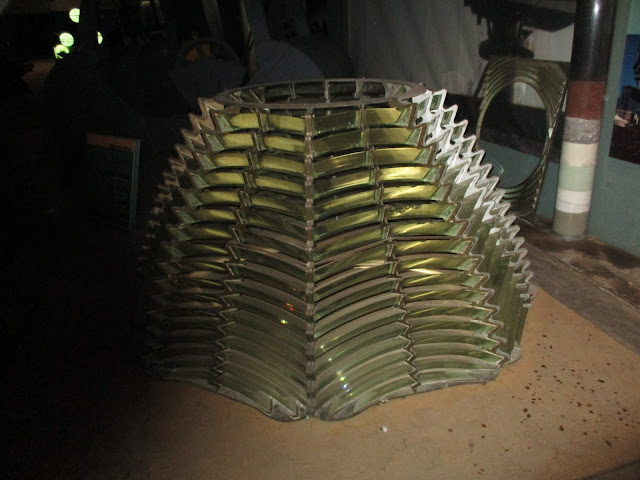 |
| One of the information panels, read below. |
One day this week we went with Ivan to Museo Naval, a museum dedicated to the large port in Sevilla (Del Puerto De Sevilla). http://museo.apsevilla.com in Spanish but you'll get an idea.
Sevilla was the world’s largest port from 2nd Century AD up to approximately Christopher Columbus days when silt caused them to move the main port to Cadiz. https://en.wikipedia.org/wiki/Guadalquivir Being on a river instead of a coastline made for secure shipping of worldly goods in and out of Spain from the Americas. It has grown and morphed at different times further towards the sea or mouth of the river.
The Museum covered the entire history of the port and how it's business related to and affected the City, it was fascinating to us. We were all a bit surprised with the amount of information, the size and completeness and the length of the tour, two hours. The fellow is not a "tour" guide, he works for the City Port Authority but wow! did he know the history.
 |
| Our guide through the museum. |
It was cold in there, built in what used to be part of the port storage areas, large cavernous building with only windows close to the very high ceiling.
The tour was free and had to be booked ahead but worth going if you want to learn about Sevilla and it’s shipping history which was and is so very important to this City.
They had a complete installation of lighthouse lights and parts showing how they have changed over the years both in size and how they operated. You can imagine or know lighthouses were terribly important to navigation.
 |
| Picture of a picture of a working lighthouse |
 |
| Okay, admittedly I like the lenses, a lot! Like pretty giant paperweights. |
 |
| The wheels go round and power the lighthouse. |
Another exhibit showed cranes, buoys, and dredging equipment. Over the years man has changed the shape of the river in places to cut a shorter path straight to/from the port to shorten the trip, saving time, money and removing silt for large ships to pass through.
There was a complete tabletop model of the port itself including ships, tiny cars, the railway which moves product from one area to another. It was large and very detailed, picture didn't turn out.
Another model showed how the river traffic is managed, with buoys and directional lights (which are red and green and opposite rules to ones in Canada).
There were picture panels with taped verbal information about the different areas of the port over time, see the above picture of the cathedral.
There was an area for the future with plans to 2020 to continue deepening the river for larger ships and expansion of port functions.
This tour isn’t well known to tourists or even locals but so very well worth seeing in my mind.
After we were all a bit weary and went for lunch at the restaurant on top of the aquarium. Too cold to sit outside so we ate in the dining room which serves as a popular night club in the evenings. Food was so so, my Pad Thai was excellent, Bruce’s and Ivan’s dishes less so. This is the second time Ivan has ordered raw tuna and the second restaurant not to have it in. He said there must be a tuna crisis in the city.
A very good day and we didn’t shop for home items, a relief of sorts before getting back at it. We've purchased two original paintings by a local artist; she happens to be the wife of the shop owner we bought the kitchen hutch from, who also does framing ... small world. I thought she captured the special light Sevilla has.
Not to bore you, but have bought more kitchen items and ceiling lights mostly Art Deco style for living room, dining room and bedroom. So no more news about that in this post.











